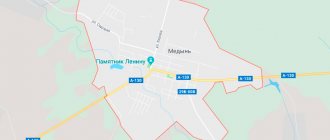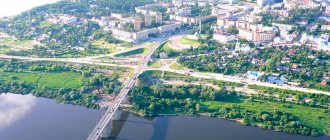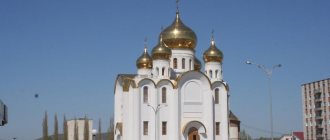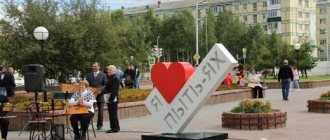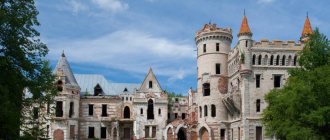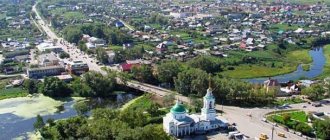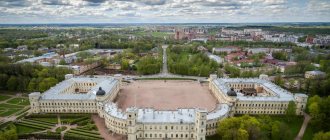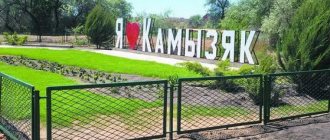The city of Kondrovo, Kaluga region, was founded in 1938. Previously, in its place there were workers' settlements, and in front of them there was the village of the same name and the Troitskoye village with its own villages and, accordingly, owner-landowners.
This city is located on both banks of the Shani River, 46 km from Kaluga, on a mound in the central part of Russia. Its area is 2100 hectares.
Hydronym
The settlement began to be called Kondrovo - the name of its first master. Dmitry Kondarev was granted the right to hereditary ownership of the coastal areas of the Shani River for his participation in the campaign against Lithuania. In 1858, the Howard Stationery Mills were founded, and then part of the land of the village of Condrova was transferred to the Howard Company. In 1871 he and his family left for Great Britain. A railway station located on the territory of a region such as the Kaluga region now bears his name; the city of Kondrovo was subsequently built around it.
Links[edit]
Notes[edit]
- ^ abcde State Committee of the Russian Federation on Statistics. Committee of the Russian Federation for Standardization, Metrology and Certification. No. OK 019-95 January 1, 1997 “All-Russian classifier of objects of administrative-territorial division. Code 29 208", ed. changes No. 278 / 2015 dated January 1, 2016. (Goskomstat of the Russian Federation. Committee of the Russian Federation for Standardization, Metrology and Certification. No. OK 019-95 January 1, 1997. Russian classification of administrative divisions) (OKATO).
Code 29 208 , as amended by Amendment No. 278/2015 of January 1, 2016). - ^ a b Federal State Statistics Service (2011). “All-Russian Population Census 2010. Volume 1" [All-Russian Population Census 2010, vol. 1]. All-Russian Population Census 2010 [All-Russian Population Census 2010]
. Federal State Statistics Service. - "26. The size of the permanent population of the Russian Federation by municipalities as of January 1, 2022". Federal State Statistics Service. Retrieved January 23, 2022.
- ^ abcde Law No. 7-OZ
- "On the Calculation of Time". Official Internet portal of legal information
. June 3, 2011. Retrieved January 19, 2022. - Post office. Information and computing center of OASU RPO. ( Post office
).
Search for postal service objects ( postal Search for objects
) (in Russian) - ↑
Federal State Statistics Service of Russia (May 21, 2004).
“The population of Russia, the constituent entities of the Russian Federation as part of federal districts, urban settlements, settlements, settlements is 3 thousand or more people” [Population of Russia, its federal districts, federal districts, districts Urban settlements, rural settlements - administrative centers and rural settlements with a population of over 3,000] (XLS). All-Russian Population Census 2002
. - “All-Union Population Census of 1989. The current population of union and autonomous republics, autonomous regions and districts, territories, negative phenomena, urban settlements and rural areas of the City of Kaluga,” for which other dates for entry into force have been established. (Legislative Assembly of the Kaluga Region. Law dated December 28, 2004 No. 7-OZ “ On establishing the boundaries of municipalities on the territory of the administrative-territorial units “Babyninsky district”, “Borovsky district”, “Dzerzhinsky district”, “Zhizdrinsky district”, “Zhukovsky district”, “Iznoskovsky district” ", "Kozelsky district", "Maloyaroslavetsky district", "Mosalsky district", "Ferzikovsky district", "Khvastovichsky district", "City of Kaluga", "City of Obninsk", as well as on assigning them the status of an urban settlement, rural settlement, urban district, municipal district
as amended by Law No. 620-OZ dated September 29, 2014.
On amendments to the Law of the Kaluga Region “On establishing the boundaries of municipal entities located on the territory of the administrative-territorial units “Babyninsky District”, “Borovsky District”, “ Dzerzhinsky district", "Zhizdrinsky district", "Zhukovsky district".
", "Iznoskovsky district", "Kozelsky district", "Maloyaroslavetsky district", "Mosalsky district", "Ferzikovsky district", "Khvastovichsky district", "City of Kaluga", "City of Obninsk" and on assigning them the status of an urban settlement, rural settlements, urban districts, municipalities . Comes into force after official publication, with the exception of clauses on the municipal formation "City of Kaluga", for which different dates of entry into force are indicated.).
Development
The enterprise that Howard founded was the basis of the county's material sufficiency. It occupied 463 acres of land. On this territory there were 2 schools, 3 factory schools, a hospital for 10-15 beds, an outpatient clinic, and 2 trading shops.
During the Second World War, the city of Kondrovo, Kaluga region, was under fascist occupation for a year. Famous poets became his guests during this difficult period.
In the 70s, the city began construction of multi-storey buildings, built 3 bridges, 2 of them for pedestrian use, opened public gardens and a large stadium. Nowadays in Kondrovo there are schools, colleges, libraries, a palace of culture, and a museum.
Kondrovo
The first mention of the village of Kondrovo is contained in the scribe book of the Medyn district for 1628–1629, in which the settlement was mentioned in 1615 as Kondyrevo. 1615 is considered to be the year the city was founded. It is believed that the settlement on the site of the modern city arose thanks to the Kondyrev princes, the “serving people” of the Grand Duke of Moscow. In 1500, for participation in military campaigns and services in the defense of the coasts of the Oka and Ugra rivers, Dmitry Kondyrev was granted lands in these places for hereditary possession. In 1615, the village of Kondyrevo is listed as “Omelyanovskoye, also, on the Shana River.” One half of the village was in the possession of the landowner Vladimirovich Polivanov Kocheva, the second was in the possession of M. B. Sherstov. In those same years, a wooden church was restored in the village after the Polish devastation. Kondyrevs
The Kondyrevs are an ancient Russian noble family, descended, according to the legends of ancient genealogists, from Mark Demidovich, a Lithuanian native who arrived from Lithuania in the city of Tver at the disposal of Prince Ivan Mikhailovich. His descendant in the fifth generation, Ivan Yakovlevich, nicknamed Kondyr, became the founder of the Kondyrevs.
Kondyrev Dmitry Vasilyevich in 1484 was a regimental commander under Ivan III, it is known that he was a participant in the Lithuanian and Livonian campaigns in 1500–1501. Probably, Dmitry Vasilyevich participated in the Great Stand on the Ugra (1480). Timofey Kondyrev, nicknamed “Zhdan” (died in 1667) – governor in Ryazhsk (1625–1626), in Yeniseisk (1631–1632), in Voronezh (1646), nursery (1646) and Duma (1651) nobleman, okolnichy (1655).
Kondyrev Pyotr Timofeevich - steward and governor in Smolensk (1675), under Fyodor Alekseevich, Duma nobleman and okolnichy, was in charge of the workshop at the Tsarina's chamber (1682), boyar (1692). Peter Timofeevich's brother, Semyon, was also a okolnichy (1678), Ivan, another brother, was a nursery, Duma nobleman, okolnichy, boyar. Kondyrev Ivan Petrovich (died in 1687) was a Duma nobleman. Many representatives of the Kondyrev family in the 17th century were solicitors and clerks.
The Kondyrev family is included in the VI part of the noble genealogical books of the Kaluga, Ryazan, Kursk and Penza provinces.
Polivanovs
The Polivanovs were also an ancient family that left their mark on the lands of the Medyn district. Timofey Grigorievich Polivanov (d. about 1635) in 1611 was a streltsy head, serving in the zemstvo service with the governor Prince Trubetskoy Dmitry Timofeevich, in the city of Medyn. Andrei Vasilyevich Polivanov was a governor in Oleshnya in 1653, and wrote from there to the boyar Vasily Petrovich Sheremetev and other governors about Bogdan Khmelnitsky, about the military actions and intentions of the Nogai and Crimean Tatars, and about other news. After the death of his father, he inherited, among other things, the estate of his uncle Kocheva Polivanov in Medynsky district, half of the village of Kondyrev. His wife was Elena Timofeevna, née Anisimova, the widow of Leonty Shetnev. Died in 1657
Ivan Afanasyevich Polivanov lived in St. Petersburg and was here in military service. After retiring in 1752 with the rank of court councilor, he lived on his family estate, in the village of Ekimovka, Medynsky district.
The village of Kondyrevo in the 17th century
In 1678, in the village of Kondyrevo there were 18 households, in which there were more than 100 male souls. In the second half of the 17th century, the village of Troitskoye was founded nearby by Prince Fyodor Fedorovich Kurakin, which in 1678 merged with the village of Kondyrevo. Around Kurakin's estate there were 4 villages with 29 households, in which there were 120 peasants. The owners of the villages were the princes Gagarins, Khovanskys, Begichevs, Volkonskys, Kozlovskys, Khlyustins, Kochubeis, Shchepochkins. Kondyrev's landowners bought additional peasants not only in the Kaluga province, but also in the districts of the Tver and Tula provinces.
The villages of Troitskoye and Kondyrevo in the 18th–19th centuries.
According to the atlas of the Kaluga governorship for 1782, Kondyrevo (on the left bank of the Shan) belonged to Prince Pyotr Mikhailovich Volkonsky, Nastasya Ivanova, daughter of Begicheva, Katerina Kononova, daughter of Chemesova, Anna Stepanova, daughter of Karpova and Sherstova. The village had 20 households, in which 166 people lived - 87 males and 79 females. There was a stone temple of the Savior Not Made by Hands, 2 wooden manor houses, and a mill working on the Shana River. The peasants were on quitrent.
According to the same atlas, the village of Troitskoye and the villages of Makarova, Kosyakina, Pochinki, Menshaya, Tolkacheva, Drobysheva, Maryina, Dubinina belonged to Prince Nikolai Alekseevich Kozlovsky, who became the owner of these lands in the 1770s. In total there were 124 households, the population was 852 inhabitants (420 males and 432 females). Peasants on quitrent. The village of Troitskoye was located on the left side of the Shani River, next to a pond. The wooden Church of the Life-Giving Trinity and the wooden manor house were located here. The village of Pochinki was located on the right side of the river, the village of Makarova - on both banks of the Vzynka river, the villages of Maryina and Kosyakina - on dry land, the villages of Menshaya and Tolkacheva - on the left side of the Vzynka river, the village of Drobysheva - on the left bank of the Shan, the village of Dubinina - on on the left side of the Terebrenka River.
In 1785, the brother of N.A. Kozlovsky, Yakov Alekseevich (died in 1809), became the owner of the village of Troitskoye. In the same year, Prince Ya. A. Kozlovsky founded a paper mill on the Shan River near the dam, which was put into operation in 1786. By the mid-1790s. The factory in the village of Troitskoye became a fairly large manufactory; it produced 12,300 reams of paper of various grades annually, and the net annual income of the factory exceeded 100,000 rubles.
In 1806, Second Major Anton Semyonovich Khlyustin became the new owner of Troitsky, who bought the village from Ya. A. Kozlovsky. A. S. Khlyustin was a merchant of the 1st guild, a Mosal landowner and a well-known philanthropist in the Kaluga province. In 1809, at the factory, he built and launched an “azure” plant, which produced blue azure paint, which made it possible to produce beautiful, expensive and fashionable letter paper at that time.
In 1809, after the death of Anton Semyonovich, his son Semyon Antonovich Khlyustin, who served as an officer in the Life Guards of the Uhlan Regiment and was a holder of many orders, became the owner of the Trinity estate. But in 1810 he died and was buried near the Trinity Church, and the estate and factory came into the possession of his wife Vera Ivanovna Khlustina, who belonged to the Tolstoy family. The guardian of the estate was Count Tolstoy Andrei Andreevich, his paternal uncle. In 1818, at the expense of the Khlyustins, the Church of the Life-Giving Trinity was rebuilt in stone in the village. In 1824, Vera Ivanovna went abroad, where she spent several years, at which time V.I. Khlyustina’s brother Tolstoy Yanuariy Ivanovich was her confidant and manager.
In 1835, the Trinity estate passed to Semyon Semyonovich Khlyustin (1810–1844), who in 1843 sold the estate, paper mill and azure plant to Prince Kochubey Sergei Viktorovich (1820–1880), the son of a prominent statesman, Minister of Internal Affairs of the Russian Empire Kochubey Viktor Pavlovich.
Part of the village of Kondyreva was bought by landowner Pavel Grigorievich Shchepochkin in 1799. In 1800, on the left bank of the Shan, he also founded a paper mill, which he managed until his death in 1834. In 1836, the factory was inherited by the daughter of P. G. Shchepochkin, Elena Pavlovna Meshcherinova, the actual production management was carried out by her husband, general Meshcherinov Vasily Dmitrievich.
In 1853, after the death of her husband, Elena Pavlovna leased the factory, and later the production was bought by the Moscow merchant of the 1st guild, industrialist William Ottovich (Vasily Osipovich) Howard, an Englishman by birth, who four years earlier also acquired the Trinity factory. First of all, he replaced old machines and units with new ones, a 40-horsepower steam engine was installed, boilers delivered from abroad were installed, and a sizing machine, the first in Russia, was installed for sizing paper. In 1858, the Troitskaya and Kondrovskaya factories were merged into the joint-stock company “V. Howard’s Troitsk-Kondrovskaya Stationery Factories” with a directorate in Moscow. In the same year, S.V. Kochubey became a member of the society. Among the owners of the company was also honorary citizen G. Mark; the board of Howard’s company included V. M. Mark, a Moscow merchant who owned a brick factory in the village of Kondrovo.
In 1862, 550 workers worked at the Kondrovskaya and Troitskaya factories; they produced products worth 370 thousand rubles per year. In 1871, William Howard and his family left for Italy, but he did not lose the threads of managing the company. From 1880 to 1890, the manager of Howard's company was August Augustovich Stepun, a German by birth. From 1896 to 1918 the company was managed by Yakov Grigorievich Khinchin. At the end of the 19th century, a self-scooping machine was installed at the Trinity factory, electric lighting and steam heating were installed. In 1870, zemstvo folk and factory two-year schools were opened. In 1883, a railway line was built to Howard's factories, which connected the enterprises with the Ryazhsko-Vyazma Railway; the station that arose here was named Govardovo.
Kondra's paper was of high quality, which made it widely known. Four times it was awarded the honorary right to be issued with the image of the state emblem of the Russian Empire, and in 1900 in Paris at the World Exhibition it was awarded the highest award - the “Grand Prix”. Paper branded from Kondrovsko-Troitsk factories was bought in all parts of Russia.
There were other industries on the territory of the future city of Kondrovo. For example, in 1847 Elena Pavlovna Meshcherinova set up and launched a needle factory in a stone outbuilding. One of the Meshcherinovs’ sons, Colonel Gavrila Vasilyevich Meshcherinov (1831–1890), founded a distillery with a steam engine in 1865, which employed 30 people, and the enterprise was managed by a Prussian citizen. The plant occupied a stone building (according to old-timers, somewhere in the area of modern Kalinin Street). The products were sold in Medyn, Kaluga and other localities.
Development of Kondrov in the 20th century
The Troitsko-Kondrovsky factories reached their maximum prosperity by the beginning of the 20th century; they produced a wide range of products - from cardboard, wrapping and telegraph paper to paper of the highest quality, including those with watermarks, used for issuing securities and money. According to data for 1913, up to 10% of all paper production in Russia was produced at the Kondrovskaya and Troitskaya factories, which were the basis for the well-being of the population of the entire district.
The company owned 463 acres of land. At the factories there were 2 schools and 3 factory schools, an outpatient emergency room, and 2 factory trading stores. In 1913, the People's House, built at the metropolitan level, was opened for cultural and educational purposes. Since 1914, a hospital with twenty beds was located in the People's House. Factory workers had free housing at their disposal, in which separate families lived, and employees were entitled to separate free apartments. During this period, there were about 2 thousand inhabitants in Kondrovo, and about 2 thousand people also lived in Troitsky.
As throughout Russia, at the beginning of the 20th century, a revolutionary movement was in full swing in factories, and a revolutionary circle was created from among the advanced workers. In November 1917, workers organized the Trinity-Kondrovsky Council, whose tasks included maintaining the normal rhythm of production. According to the collection “Joint Stock Enterprises of Russia” for 1917, the fixed capital of Howard’s company was 3 million 600 thousand rubles, the total number of workers at the enterprises was 2,215 people.
Since the beginning of the 20th century, the village of Kondrovo has been gradually turning into a working village; there are actually no peasants who are land owners, there are factory peasants. The owners of the land are mainly merchants and townspeople, and the main owner is the company of Howard's Trinity-Kondrovsky factories. Only in 1916 there were 217 houses of commoners in Kondrovo, of which 76 were houses of burghers, while there were a little more than 50 peasant houses.
In May 1918, the lands and property of landowners and business owners were nationalized. Worker Pyotr Chichirin was elected as the first director of the Troitsko-Kondrovsky factories after their nationalization, but he failed to cope with the management of a large enterprise and was removed from his position. At the end of 1918, Alexander Vilgelmovich (Vasilievich) Kayats, who had worked in a managerial position in Howard’s company since 1909 and was well acquainted with the specifics of production, was appointed director. He managed the factories until the 1930s. A. V. Kayats, who accepted the socialist revolution, joined the ranks of the RCP (b) in 1920 and became one of the major organizers of the paper industry in the Soviet Union.
The Howard factories were mentioned by Vladimir Lenin in his work “The Development of Capitalism in Russia”. During the formation of Soviet power, Leon Trotsky, Emelyan Yaroslavsky, Anatoly Lunacharsky, Mikhail Kalinin spoke to factory workers from the platform of the People's House (later the City House of Culture was located here). After the death of V. Lenin in 1924, a monument to the leader was erected in Kondrovo, the first in the Kaluga province.
In 1929, the village of Kondrovo was officially transformed into a workers' village. On March 25, 1938, by decree of the All-Russian Central Executive Committee, the workers' villages of Kondrovo and Troitskoye were united into a single settlement and given the status of a city.
On October 9, 1941, the city of Kondrovo was occupied by Nazi troops, but on January 19, 1942 it was liberated. In August 1943, front-line poets came to the city: Dmitry Osin, Alexander Tvardovsky and Nikolai Rylenkov, who read poems about the war in the People's House, A. T. Tvardovsky read out chapters from the still unfinished poem “Vasily Terkin”.
In 1964–1969 under the chairman of the City Council of Deputies Alexander Andreevich Artizov, active improvement of the city began. During this period, suspension bridges were built across the Shanya River to the city market and pedagogical school. The central highways of Kondrov are being paved, and the construction of five-story panel houses on Lenin Street begins. Schools No. 2 and 4 and the “Malyshok” kindergarten are under construction. Construction of a tissue paper factory begins. A new street appears in the city - Yuzhnaya (Cheryomushki).
In the 1980s, when the post of chairman of the city executive committee was held by Nikolai Ivanovich Romantsov, a city park was opened in Kondrovo and the stadium was reconstructed.
According to the results of 2005, the city of Kondrovo was recognized as the second most improved city in Russia after Dmitrov among cities with a population of less than 100 thousand people.
Transport and economics
The city is located on the most important highway in the region. It has bus and railway communications with Kaluga, Tula, Vyazma and Moscow.
Kondrovo, Kaluga region, is small, but has a developed industry. Economically significant enterprises are a crushing and screening plant, food and agricultural production, and hygiene supply factories. However, the dominant one is the pulp industry.
Climate zone
The climate of the city of Kondrovo, Dzerzhinsky district, Kaluga region, is moderate continental with distinct seasons. In summer the weather is generally acceptably hot and humid. Winter period - with a stable amount of precipitation in the form of snow, quite cold. The predominant air front in winter and summer is the continental masses of temperate latitudes.
Attractions
Having visited Kondrovo, Kaluga region, you should definitely visit its memorable places, which are part of the history of the city and all of Russia. The Church of the Savior Not Made by Hands was erected in 1820. The construction was financed by P. Shchepochkin. During the years of repression, the church was closed. In the sixties the building was used as a store. Since 1993, it began to serve as a sanctuary. It was reconstructed in 2008. Now the temple is located on Komsomolskaya Street.
In the city there is a monument “50 Years of Victory”, dedicated to the soldiers who did not return from the war. It is located on Corporate Street. Near this monument there is an Alley of Heroes in honor of the townspeople of Kondrovo who died in Afghanistan and Chechnya. A monument to the poet was erected on Pushkin Street. The author of this sculpture is a native of Kondrov - Svetlana Farneeva.
Another monument dedicated to the heroes who fell during the Second World War was erected on Pronina Street. The Church of the Life-Giving Trinity is the oldest sanctuary in Kondrovo (1818). During the years of repression it was used as a storage facility for a brewery. In 1988 it was transferred to the Russian Orthodox Church.
The paper mill building, built at the end of the 18th century, is located on Cooperative Street. This is one of the interesting places where you can get acquainted with the history of the city.
History[edit]
Originally known as Kondyrevo
(Kondyrevo), it was
the patrimony of
Dmitry Kondyrin, a Russian Voivode who was granted these lands for his service during the second war with the Grand Duchy of Lithuania in 1500-1501.
[ citation needed
] By the 1840s, the name of the village gradually changed to Kondrovo.
[ citation needed
]
In 1790, a paper mill was built in the village, and by the end of the 19th century it became famous for its high-quality paper.
Kondrovo was given city status in 1938 [ edit
]
During the Great Patriotic War, Kondrovo was occupied by the German army from October 9, 1941 to January 19, 1942.
Let's sum it up
The city is constantly visited by tourists. This is due to the huge number of historical monuments, as well as to the population, which respects its history and will never give up on it. Speaking about the number of people living here, it must be said that it is gradually decreasing. 2011 was the last year when population dynamics increased. After this period the numbers begin to decline.
The residents are hospitable, treat visitors well and are happy to rent out their apartments or rooms to them. Prices are different, they depend on the part of the city and the arrangement of the premises.
